How to Fix Error Code: 0x80073D0D Microsoft Store?
The 0x80073D0D error is a Microsoft store error that often appears when we try to open Microsoft Store. This error might also occur when we attempt to download apps from Microsoft Store.
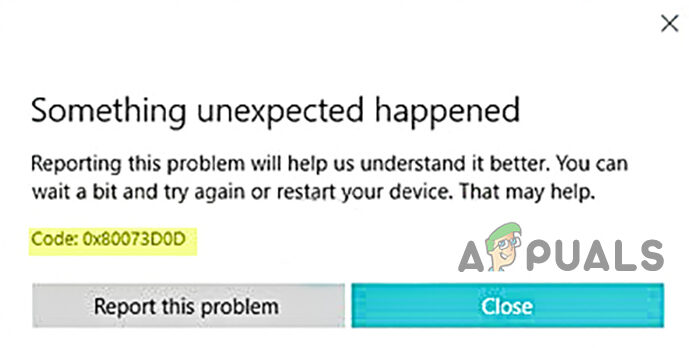
There are several causes for this error to occur most of them are below:-
- Transfer apps to another location- If you try to transfer inbuild apps from one location to another then you might encounter the 0x80073D0D error.
- Corrupted Microsoft store files- If your system files were corrupted or deleted because of the abruptly of the Windows operating system.
- Enabled firewall- Sometimes the error can appear because of the enabled firewall. firewall can break a connection between the Microsoft store and the servers.
Now that we know the causes, let’s jump into some effective troubleshooting methods that helped users fix this 0x80073D0D error.
Before we get into it we suggest you restart your computer because sometimes the error could arrive due to the Windows bugs or your Microsoft files could not load properly to provide you a better user experience.
Clear Microsoft Store Cache Files
The most common reason for corrupted cache files is a power failure and a sudden shutdown of the Windows operating system. Cache files are the temporary files that save in Windows operating system, clearing the Microsoft cache will fix the error.
Here is how you can delete Microsoft Store cache files:-
- Press the Windows key and type the Command Prompt in the search box.
- Open command prompt as administrator by pressing the ctrl + shift + enter keys together.
- Insert the following command to clear the Microsoft cache.
wsreset
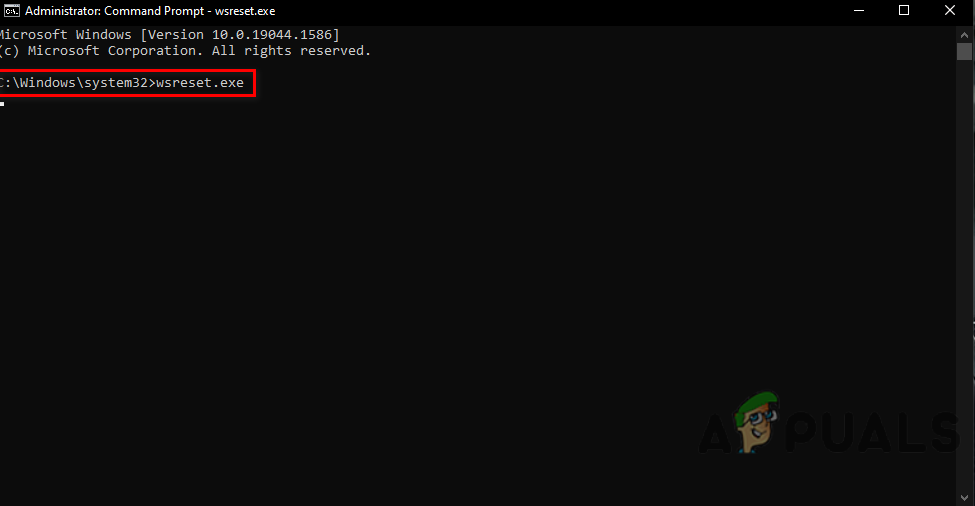
Run command wsreset Run command wsreset - Close the command prompt and check if the error persists.
Reset/Repair Microsoft Store
Microsoft products come with a repair option and reset option, We can use these options to repair and reset the Microsoft apps. We recommend you to use the repair option first, if the error will not resolve then use the reset option.
To reset/repair Microsoft Store follow the steps below:-
- Open settings by pressing the Windows + I keys.
- Click on Apps>Apps & features.
- Find the Microsoft Store in the installed applications.
- Click on the Microsoft Store then select Advance options for further settings.
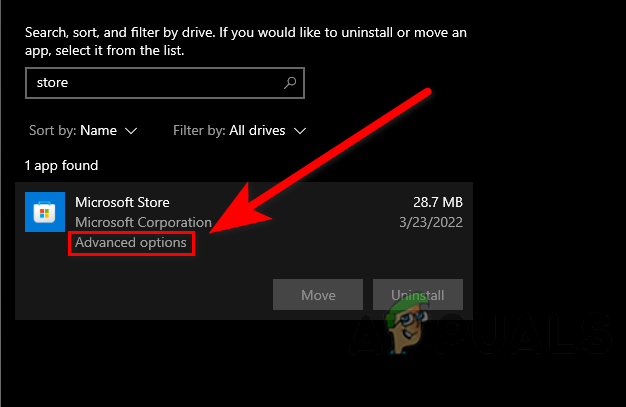
Click advance option Select advance option - At the bottom, you will see reset and repair buttons.
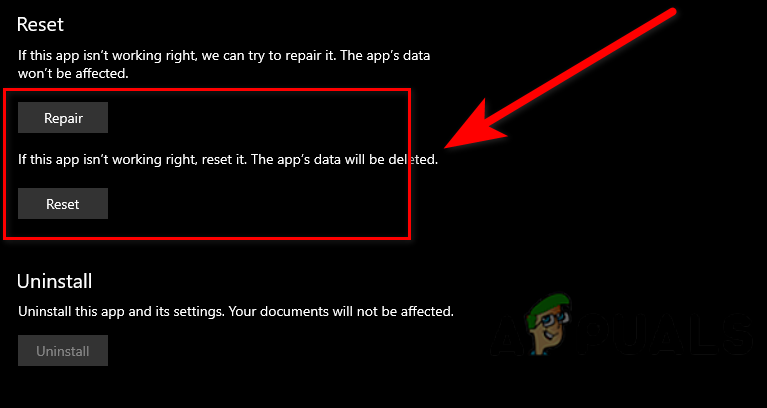
Select repair and reset option from the advance option - Click on the repair option first, if the error is not resolved then click on the reset option.
Run Windows Apps Troubleshooter
Windows includes the Windows app troubleshooter program that automatically scans and fixes the issues regarding Microsoft apps. Most of the problems like corrupted files or missing files can be resolved by using a Windows app troubleshooter.
Here is how you can use the Windows Apps Troubleshooter:-
- Open settings by pressing the Windows + I keys.
- Click on Update & security.
- You will find the Troubleshoot option on the left pane, click on it.
- Click on Additional troubleshooters for advanced troubleshooting options.

Additional troubleshooters Additional troubleshooters - You can find the Windows Store Apps option under the Find and fix other problems, click on it.
- Then, click on Run the troubleshooter.
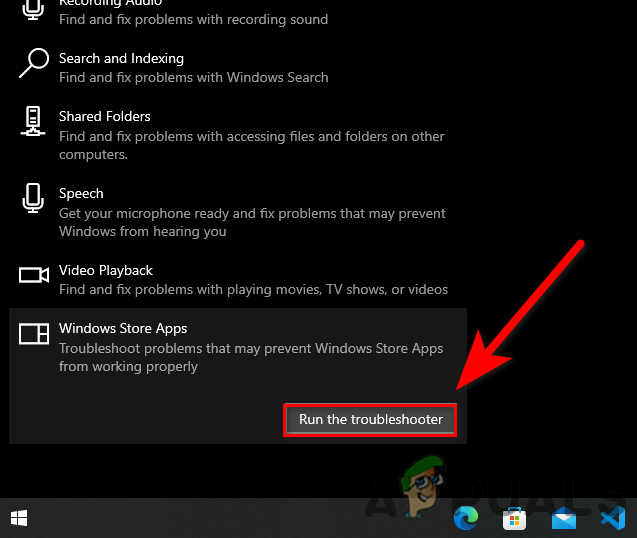
Click on Run the Windows app troubleshooter - It should start the troubleshooting process once done check if the error persists.
Reinstall Microsoft Store
You can simply reinstall the Microsoft store by inserting some commands in the PowerShell, you cant uninstall the Microsoft Store by the normal method like with the control panel or the settings, for that, you have to put the below commands to uninstall the Microsoft Store.
Here is how you can reinstall Microsoft Store:-
- Click on the start menu and type the Windows PowerShell in the search box.
- Open Windows PowerShell as administrator by pressing the ctrl + shift + enter keys together.
- Insert the below command to uninstall Microsoft Store,
Get-AppxPackage -allusers *WindowsStore* | Remove-AppxPackage
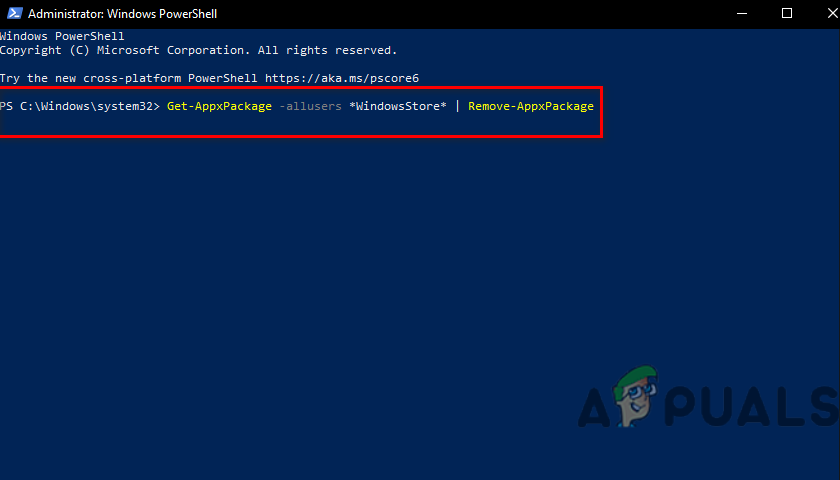
Input the command uninstall the Microsoft Store Input the command uninstall the Microsoft Store - Restart your computer.
- open PowerShell again and insert the below command to reinstall Microsft Store
Get-AppxPackage -allusers *WindowsStore* | Foreach {Add-AppxPackage -DisableDevelopmentMode -Register “$($_.InstallLocation)\AppXManifest.xml”}
Perform System Restore
If the error is still occurring then you can simply perform the system restore. System restore can help you to get rid of corrupted files, and it will also fix the other problems and make your computer in a healthy state.
Follow the steps to perform a system restore:-
- First, you have to create a restore point.
- Press the Windows key and search create a restore point in the search box, and open the restore setting.
- If the protection is disabled then you have to enable it to proceed with the further settings.
- Select the local disk then click on the configure button.

Click on configure button to enable the protection - Check the turn on system protection and click on the Apply button to apply the settings and press OK.
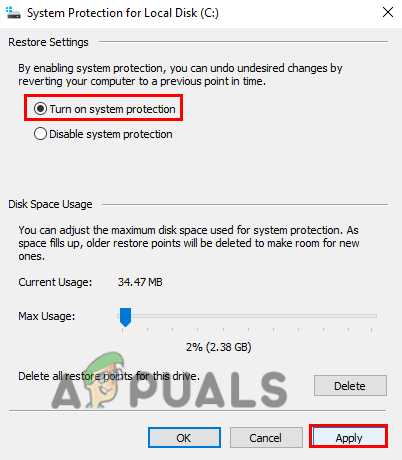
Click on the Turn on system protection - Create a restore point by clicking on the Create button then type the name of the restore point in the upcoming Window then click on create.
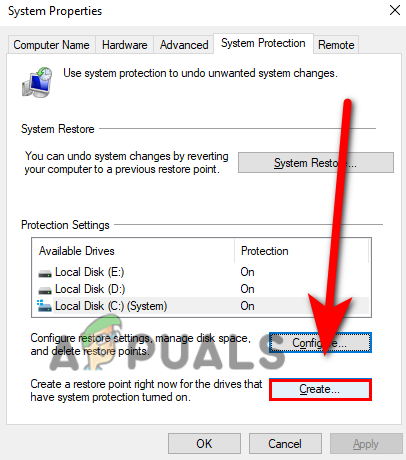
Create a restore point by clicking on the create - After creating a restore point, click on the System Restore button.
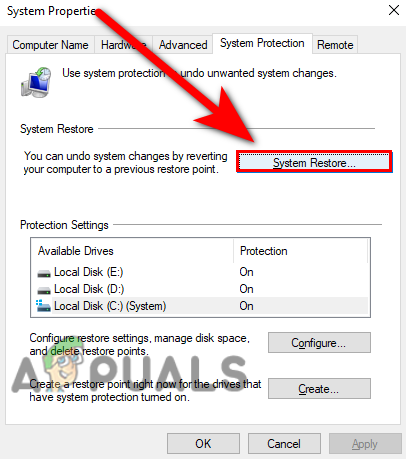
Click on system restore button - A Windows should popup just press Next.
- In the next Window, select the restore point then scan all programs by clicking on the scan for a affected programs, and press Next.
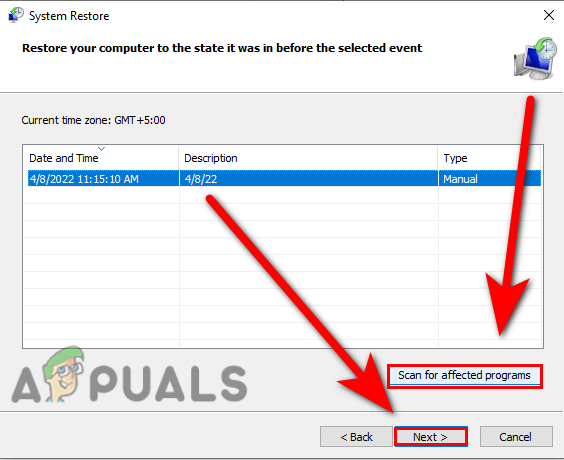
Select the restore point and click on the scan for affected programs then press next - Click on the Finish button to start the restore process.
Disable Windows Defender
The Windows Firewall can prevent the connection between the Microsoft Store and the servers, for that reason, you can temporarily disable the Windows defender firewall, if you have any third-party antivirus software then disable it.
Follow the steps to disable the Windows defender.
- Press the Windows key and search Control Panel.
- Open the Control panel and click on the dropdown menu of View By on the top-right, select the Large icons option.
- Click on the Windows Defender Firewall then click Turn Windows Defender Firewall on or off.
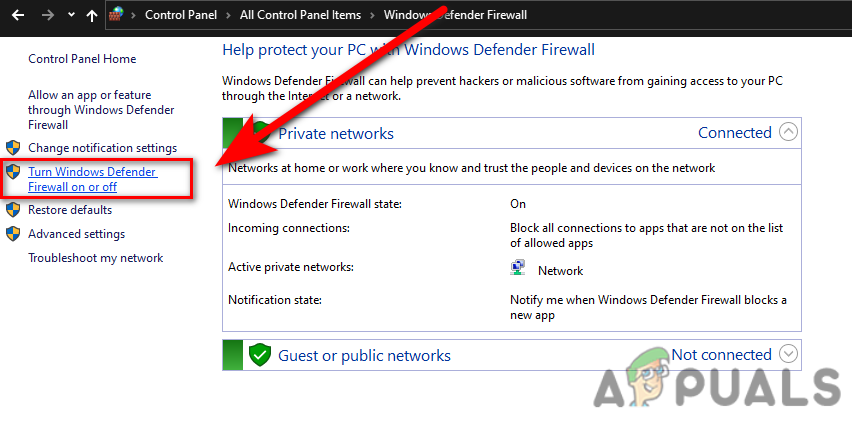
Click on Turn Windows defender firewall on or off - In the next Window, turn off the Windows Firewall by clicking on the Turn off Windows Defender Firewall.
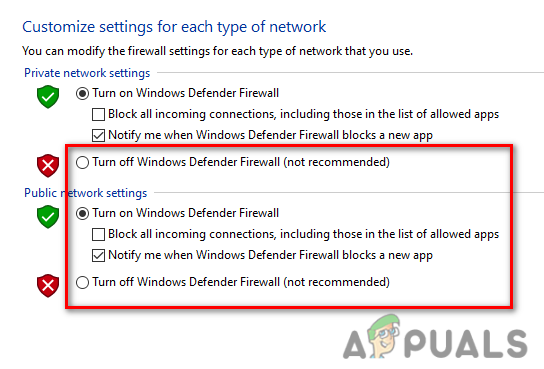
Turn off Windows Defender Firewall
Run System File Checker
The System File Checker is developed by Microsoft for Windows Operating System. It is a utility that allows the user to scan all your system files, and replace the corrupted files with cached copy files.
Follow the steps to run the system file checker:-
- Press the Windows key and type the Command Prompt in the search box.
- Open command prompt as administrator by pressing the ctrl + shift + enter keys on the keyboard.
- Insert the below command to run the system file checker.
sfc/scannow

Run sfc/scannow in command prompt - Once done, reboot your computer and check if the error is resolved.
Hopefully, you have successfully solved the 0x80073D0D error, if you have any doubts about this issue we would like to hear in the comments.






